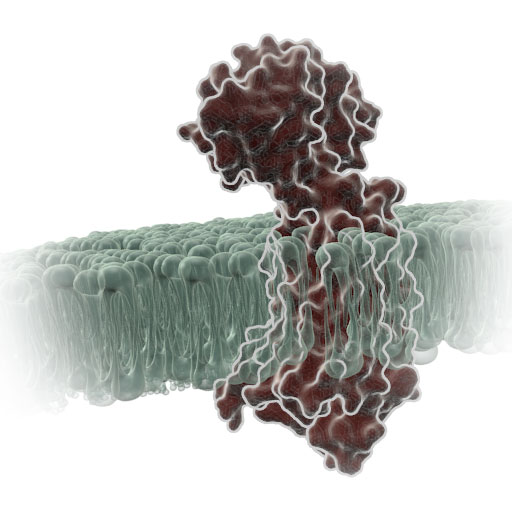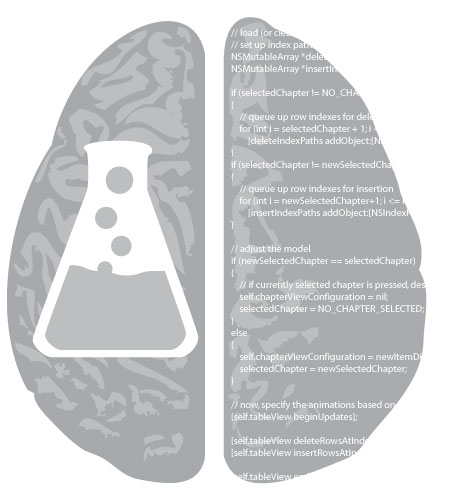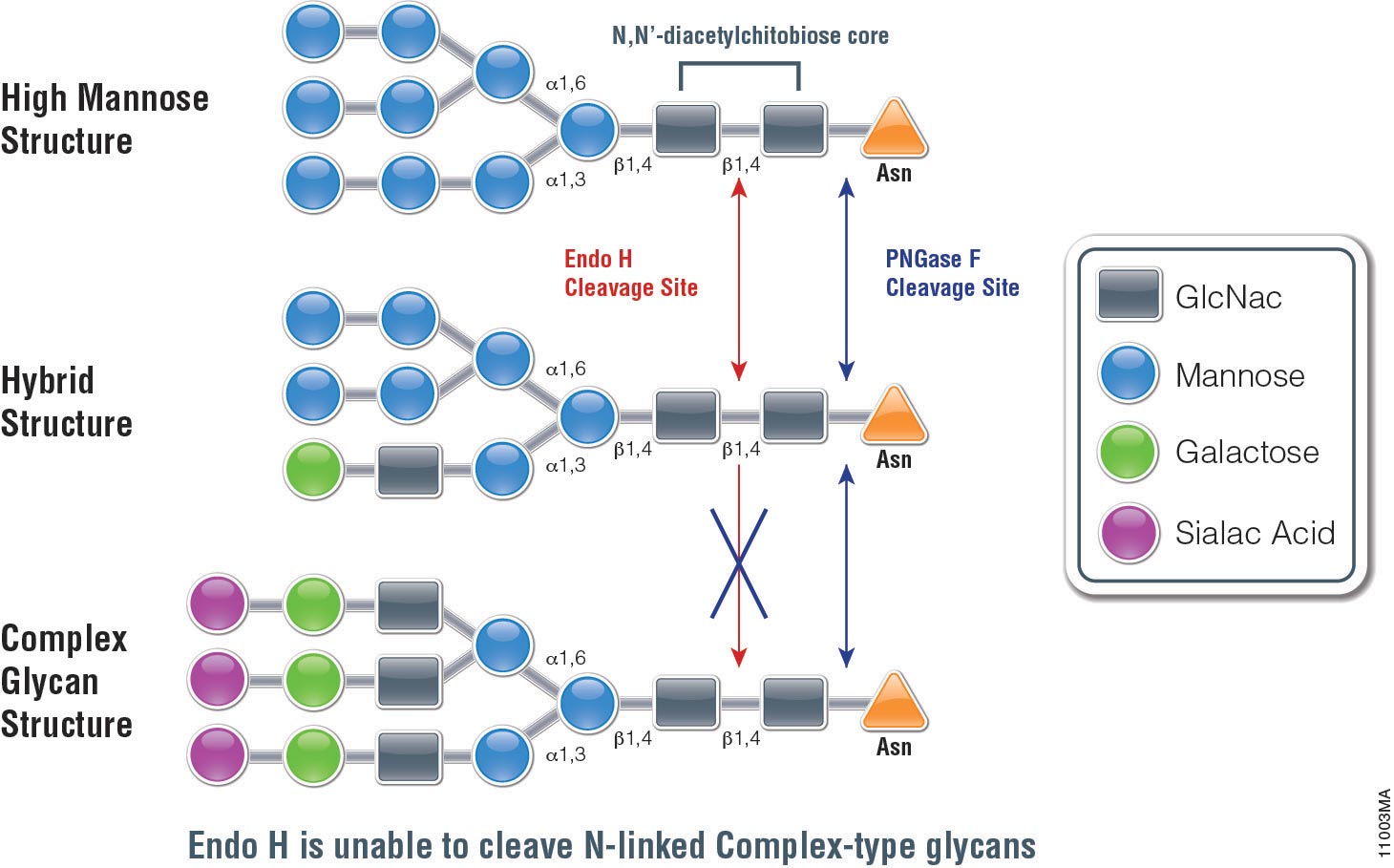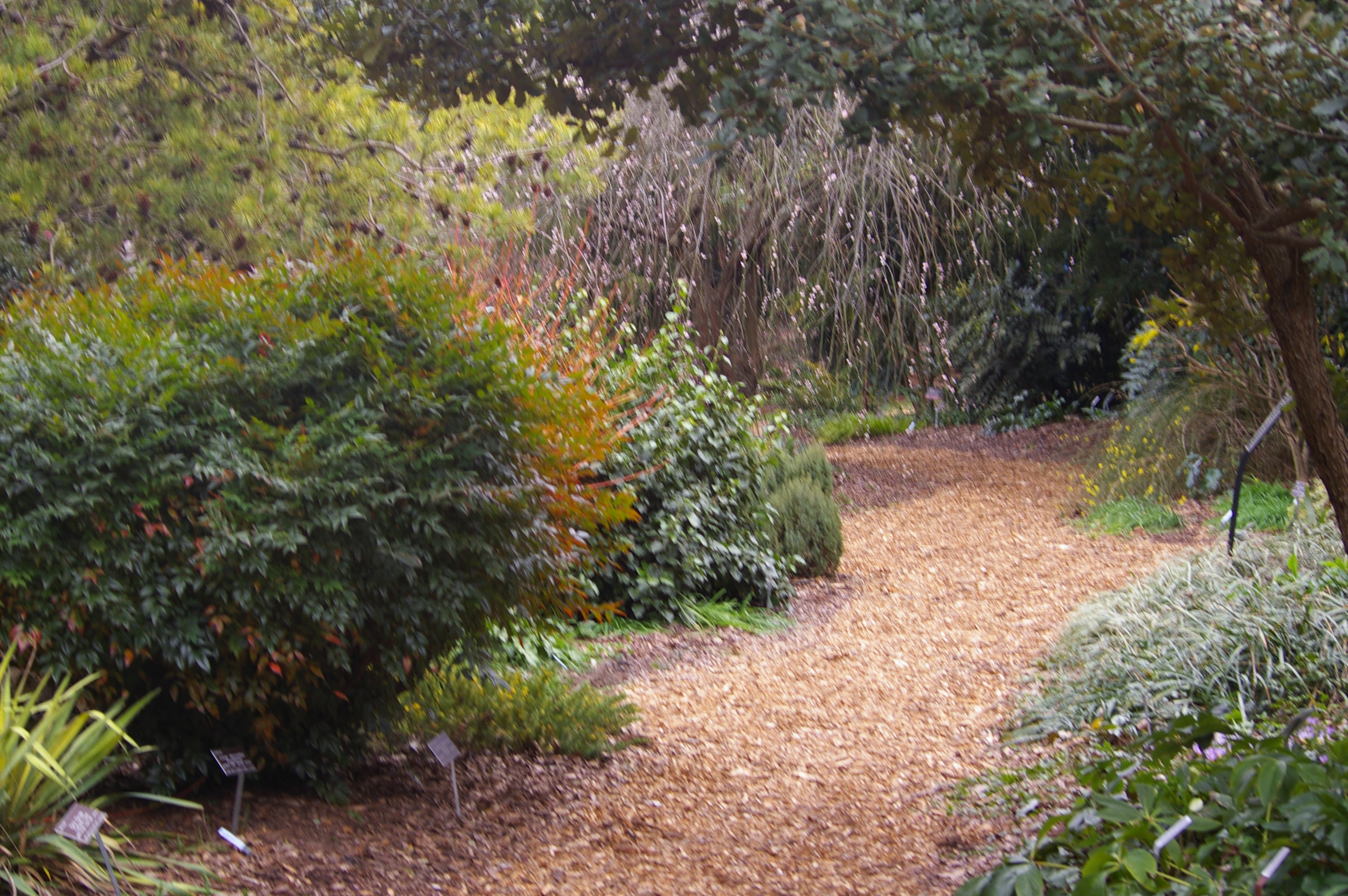
So close…This ball never went in the pocket.
Science is a discipline of failure. This concept is one that usually hits home during one of those late, late nights in the lab. Most days, most experiments, by definition, are failures. Continue reading “The Fabulous Failed Experiment”
science
Chromatography and “Air Traffic Control” Interplay Direct Olfactory Function
 It is not difficult to appreciate why a keen sense of smell is important to well-being and to general living. While it signals the presence of delicious (or stale) food before we can even see or taste it, it has obvious great survival value to be able to alert living beings of danger such as certain poisons, leaking gas or fire. Humans are known to identify about 10,000 different types of odors. Of course dogs have vastly improved and keener sense of smell than human beings.
It is not difficult to appreciate why a keen sense of smell is important to well-being and to general living. While it signals the presence of delicious (or stale) food before we can even see or taste it, it has obvious great survival value to be able to alert living beings of danger such as certain poisons, leaking gas or fire. Humans are known to identify about 10,000 different types of odors. Of course dogs have vastly improved and keener sense of smell than human beings.
When odorant molecules (molecules that we can smell) reach the nostril, they dissolve in the mucus and bind to olfactory receptors present on the cilia of each sensory neuron. This binding activates a G-protein coupled cascade involving adenylyl cyclase. This causes the release of cyclic AMP and opening of cAMP-dependent sodium channels. Influx of sodium causes the membrane to depolarize and activate an action potential for propagation of the signal to the brain where it is analyzed and decoded(1). This seems pretty straightforward until one realizes the sheer magnitude of smells we are able to identify using this mechanism. Continue reading “Chromatography and “Air Traffic Control” Interplay Direct Olfactory Function”
How Is a Molecular Biologist Like a Computer Programmer?
 My wife, the molecular biologist, tells me she spends her days “at the bench” and “in the hood.” There, she works with cells, plasmids, RNA, enzymes and buffers, incubators, water baths, columns, gels, filters and spectrophotometers. She transfers various quantities of liquids into and out of plastics and glassware. At least, that’s what I understand when I ask her, “how was your day?”
My wife, the molecular biologist, tells me she spends her days “at the bench” and “in the hood.” There, she works with cells, plasmids, RNA, enzymes and buffers, incubators, water baths, columns, gels, filters and spectrophotometers. She transfers various quantities of liquids into and out of plastics and glassware. At least, that’s what I understand when I ask her, “how was your day?”
I can’t really understand her fascination with all of this, but then I don’t have to: I’m an app developer, a programmer who designs and builds applications for smartphones and tablets. My work day consists of sitting in front of a laptop, cranking out code. There’s the occasional break afforded by meetings and presentations, writing up design documents, sketching out how a user interface might look like. Then it’s back to the computer, and programming.
But in spite of these differences, there is a critical aspect of my wife’s work that, whenever she speaks of it, I immediately recognize in my own professional life: We both rely extensively on kits and components, and doing so profoundly affects the way that we approach our jobs. Continue reading “How Is a Molecular Biologist Like a Computer Programmer?”
Cancer research yields unexpected results
 Louis Pasteur once said “Chance favors the prepared mind”. Surely any scientist can attest to this. Discoveries of things like artificial sweeteners, Teflon, and penicillin were all unintended products of unrelated research. Recently, scientists at the Duke Cancer Institute studying the microevolution of enzymes involved in cancer happened upon a missing enzymatic link in a very unrelated area of research that has less to do with cancer than with the production of carpeting, apparel, and auto parts(1).
Louis Pasteur once said “Chance favors the prepared mind”. Surely any scientist can attest to this. Discoveries of things like artificial sweeteners, Teflon, and penicillin were all unintended products of unrelated research. Recently, scientists at the Duke Cancer Institute studying the microevolution of enzymes involved in cancer happened upon a missing enzymatic link in a very unrelated area of research that has less to do with cancer than with the production of carpeting, apparel, and auto parts(1).
Nylon is a critical component in all of those products, any many, many more. Production nylon requires a compound called adipic acid. This intermediary, one of the most widely used chemicals in the world, is produced from fossil fuels and pollution released from its refinement process is a leading contributor to global warming. To date, there hasn’t been a “green” way of producing adipic acid because there is one critical enzyme in the synthesis pathway that isn’t available: 2-hydroxyadipate dehydrogenase.
Biochemical engineering on its own had not produced a sufficient dehydrogenase to do the job. Enter the cancer researchers. Cancer involves the microevolution of cells which offer benefits to the cells, sometimes including gain-of-function mutations in metabolic enzymes. Duke researchers identified a mutation in glioblastomas that alters the function of isocitrate dehydrogenase. The Duke team applied their knowledge of how enzymes change during cancer to lay the blueprints on a new method for producing clean, green, adipic acid. By using the same mutation framework, the scientist found that they could create enzymes from homoisocitrate dehydrogenase found in yeasts and bacteria that were capable of producing adipic acid from inexpensive sugars. The group still needs to scale up their production, a process that will still require a tremendous amount of work.
1. Reitman, Z. et al. (2012) Enzyme redesign guided by cancer-derived IDH1 mutations. Nat. Chem. Biol. Available online.
Endo H Application: Monitoring Protein Trafficking
 Endo H (Endo-ß-N-acetylglucosaminidase H) is a 29,000 dalton protein with optimal activity between pH 5 and 6. In contrast to PNGase F, which cleaves all N-linked glycans at the site of attachment to Asparagine (Asn), (with the exception of those with fucose attached to the core GlcNac moieties), Endo H hydrolyses the bond connecting the two GlcNac groups that comprise the chitobiose core (see Figure 1.). In addition, Endo H cleaves high mannose and hybrid glycans, whereas complex glycans (those with more than 4 different sugar types per glycan chain, including the GlcNac groups) are resistant to hydrolysis.
Endo H (Endo-ß-N-acetylglucosaminidase H) is a 29,000 dalton protein with optimal activity between pH 5 and 6. In contrast to PNGase F, which cleaves all N-linked glycans at the site of attachment to Asparagine (Asn), (with the exception of those with fucose attached to the core GlcNac moieties), Endo H hydrolyses the bond connecting the two GlcNac groups that comprise the chitobiose core (see Figure 1.). In addition, Endo H cleaves high mannose and hybrid glycans, whereas complex glycans (those with more than 4 different sugar types per glycan chain, including the GlcNac groups) are resistant to hydrolysis.
The unique specificty of Endo H and PNGase F can be used to monitor protein trafficking. Basic N-Glycosylation occurs in the endoplasmic reticulum. Proteins in this stage are sensitive to Endo H digestion. If proteins have entered the Golgi body where additional modifications occur to the glycan, they are resistant to Endo H digestion.
The following references illustrate this application:
- Taner, S. et al. (2011) Interactions of NK cell receptor KIR3DL1*004 with chaperones and conformation-specific antibody reveal a functional folded state as well as predominant intracellular retention. J. Immunol. 186, 62–72
- Beyer, S. et al. (2011) KT5823 differentially modulates sodium iodide symporter expression, activity, and glycosylation between thyroid and breast cancer cells. Endo. 152, 782–92.
- Chen, Z. et al. (2011) CEACAM1 dampens antitumor immunity by down-regulating NKG2D ligand expression on tumor cells. J. Exper. Med. 208, 2633–40.
- Iavarone, C. et al. (2011) A point mutation in the amino terminus of TLR7 abolishes signaling without affecting ligand binding. J. Immunol. 186, 4213–22.
- Guo, Y. et al. (2011) Herpes simplex virus encephalitis in a patient with complete TLR3 deficiency: TLR3 is otherwise redundant in protective immunity. J. Exper. Med. 208, 2083–98.
Whorl by Whorl, I Am Science

Since the SCIO12 meeting, I have followed the #Iamscience discussion with interest. Reading the posts of others made me wonder, how did I become a scientist? When did I become a science writer? Where did the interest start? How did I end up where I am now? Continue reading “Whorl by Whorl, I Am Science”
A Scientist’s Rant about the Word “Theory”
I have many pet peeves in my life. Because I am a scientific editor, many of my pet peeves revolve around abuse of the English language. The abuse that set me off most recently is the misuse of the word “theory”. These days everyone has a theory about something. For example I have a “theory” as to why I gained five pounds over the holidays: Too much rich food and egg nog! However, from a scientific standpoint, saying “I have a theory as to why I gained five pounds over the holidays” is not a proper use of the word theory. While it is likely that the food and egg nog contributed to the weight gain, I do not have a theory. The cause of the weight gain has not been scientifically scrutinized and put through rigorous testing. There isn’t a pile of scientific evidence to support my statement. What I have is a sound working hypothesis, not a theory.
Continue reading “A Scientist’s Rant about the Word “Theory””Odyssey of a Grad Student and the Playlist that Paved the Way
 Grad school is no walk in the park. Whether the topic is English or Astrophysics, most grad students would agree that the journey to the coveted PhD can simply be described as “hard”- academically, financially, mentally. It is very important to have an outlet for the associated stress such as a hobby or exercise. My outlet was music. Music is very important in my life. It is so important that most people close to me have their own soundtrack that plays in my head when I think of them. Needless to say, music played a big part in saving my sanity during my 7.5 years in grad school. As time went on, there were several songs that marked important milestones and emotions I experienced along the way. When I defended my thesis, I decided to leave the department with a musical story of how I made it through. I created a compilation CD of all these songs to share with the department and any other struggling grad students I encountered. The CD has a custom label featuring the structure of the protein I studied, cardiac troponin C.
Grad school is no walk in the park. Whether the topic is English or Astrophysics, most grad students would agree that the journey to the coveted PhD can simply be described as “hard”- academically, financially, mentally. It is very important to have an outlet for the associated stress such as a hobby or exercise. My outlet was music. Music is very important in my life. It is so important that most people close to me have their own soundtrack that plays in my head when I think of them. Needless to say, music played a big part in saving my sanity during my 7.5 years in grad school. As time went on, there were several songs that marked important milestones and emotions I experienced along the way. When I defended my thesis, I decided to leave the department with a musical story of how I made it through. I created a compilation CD of all these songs to share with the department and any other struggling grad students I encountered. The CD has a custom label featuring the structure of the protein I studied, cardiac troponin C.
In this blog, I will share with you that playlist, entitled “Odyssey of a Grad Student,” and a description of the significance of each track. You can listen to all but one* of the songs on YouTube (http://youtu.be/8qrriKcwvlY). Click the link and listen as you read along. Continue reading “Odyssey of a Grad Student and the Playlist that Paved the Way”
Slightly More than Half of Everything I Am Is Thanks to You
In honor of Mothers everywhere, we are unashamedly recycling this post because it’s just that good.
The Latest On: When Five Hundred Tigers Are Not Enough
It is sad but true that the latest news has not been promising for wild tiger populations. In September, an article published in PLoS Biology (1) estimated that the best hope of saving the wild tiger population would be to shift focus to source sites, which are “…at spatially well-defined priority sites, supported by proven best practices of law enforcement, wildlife management, and scientific monitoring.” The authors estimate the cost to save these sites at $82 million (U.S). At the time of publication, $47 million had been committed by governments and other groups. It isn’t difficult math to figure out there is a deficit.
Continue reading “The Latest On: When Five Hundred Tigers Are Not Enough”
